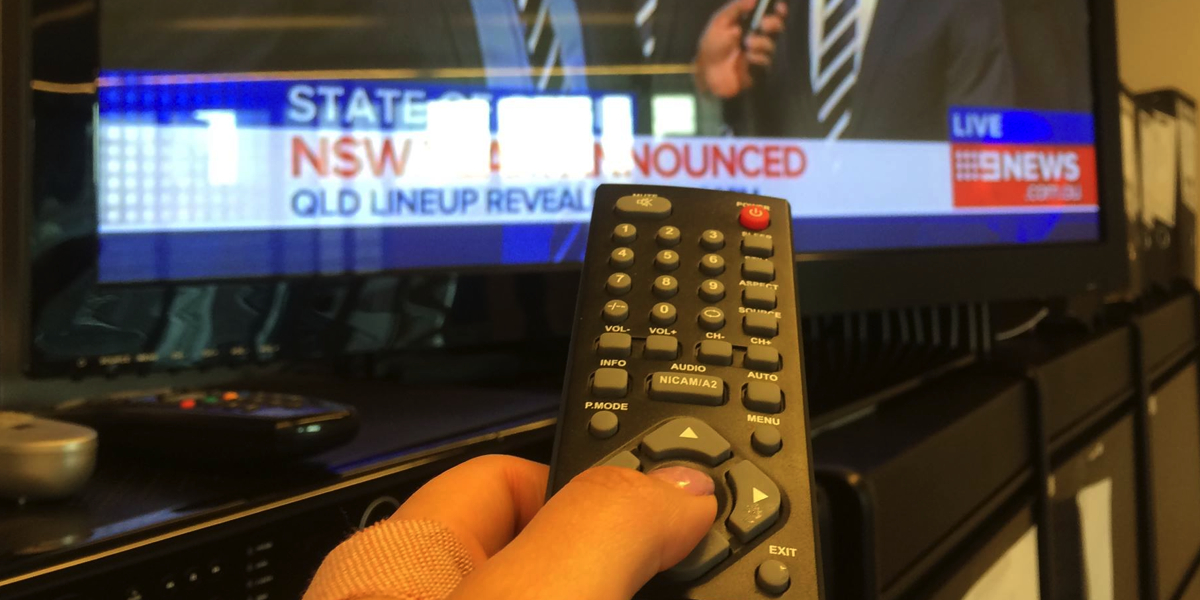Free-to-air television remains the most trusted and valued broadcast service, with an overwhelming majority of Australian viewers still relying on commercial free-to-air broadcasters to deliver their daily news and original Australian content, despite growing competition from global content distributors.
Almost 90 per cent of Australians believe free-to-air television is valuable to the community, according to a new report released today by independent research firm Crosby|Textor.
The new research, commissioned by Free TV Australia, examined the viewing habits, consumption and methods of watching TV, and the considered value and favourability of free-to-air television.
The research has shown that:
• 81% of people watch free-to-air television daily – none of the other online or physical services came close and are all in the minority for daily or weekly viewership
• 88% believe that commercial free-to-air is valuable to the Australian community
• 88% believe major sporting events should be available to all Australians for free
• 72% are satisfied with commercial free-to-air programmes and services such as trusted news and current affairs, entertainment, live sport, and the industry’s support of Australian production and content
Commenting on the research, Free TV Australia Chairman Harold Mitchell said, “Online services like Netflix may be flavour of the month but we have been a valued part of the Australian community for decades and we continue to be the most important platform for the vast majority of Australian viewers.
“This research proves that free-to-air broadcasting is highly valued – consistent across usage levels as well as metropolitan and regional areas.
“There are a lot of doomsayers out there who will tell you TV is dead. Well, we decided to find out what Australians really think of their TV. This research shows that despite more ways than ever to view content and the unfair restrictions and fees that shackle our industry, free-to-air television is highly valued by Australian voters.
“In order to continue to deliver quality Australian programming we need the Government to unshackle us and allow us to compete in this changing market place – to ignore this research would be at their peril.”
• Key Findings
Value of Free TV
1. Almost nine out of ten Australians believe commercial free-to-air television is valuable to the Australian community. In addition, the belief in the value of commercial free-to-air television is strong and solid.
2. 78% of people believe that free-to-air television is the best place to watch quality Australian drama. A further 72% of people thought it was the best place to watch current affairs shows, and 67% rated it as the best place to watch family programmes.
3. 80% of people regularly watch news programmes on free-to-air. This overwhelming majority is consistent across the different States and Territories.
4. 80% of people surveyed agree that commercial free-to-air television has a strong future because Australians rely on it.
5. An overwhelming 87% of people agree that Governments should not damage the commercial free-to-air television industry.
Usage and Mediums
1. 81% of people watch free-to-air television DAILY. Australians and their families are still reliant on commercial free-to-air television despite the rise in new digital-based media.
2. 66% of people still watch more than 6 hours of free-to-air television a week.
3. 94% of people use their television to watch content. Television is still the number one device used to watch TV programmes in the home, including computers, tablets,
Foxtel, and DVDs.
4. Free access to sports programmes is still very important to Australians, with 76% of people disagreeing with the statement that ‘no one would care if major Australian sports are only shown on Pay TV’.
Background Note: The research was conducted on behalf of Free TV Australia by independent researchers Crosby|Textor amongst n=1,000 randomly selected Australian adults nation-wide in February 2015. The research was conducted randomly by phone and online, used minimum geo-demographic quotas and weighting to ensure accuracy, and has a margin of error of +/-3.08%.
Source: Free TV Australia
